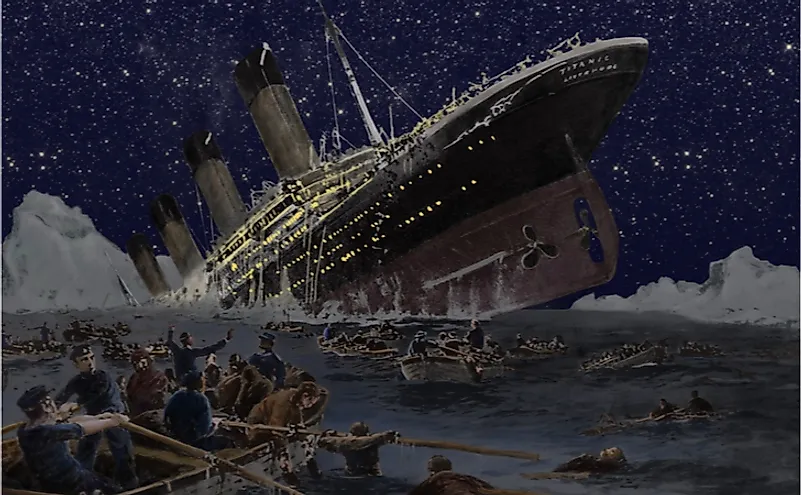Where Did The Titanic Sink?

The Royal Mail Ship (RMS) Titanic sank on the wee hours of April 15, 1912, in the Atlantic Ocean. The ship struck an iceberg as it made its maiden trip from Southampton to New York City. The wreckage of the Titanic remained undiscovered until 1985 when it was located 370 miles off the coast of Newfoundland by French and American ocean explorers. As the ship sank, the stern and the bow separated due to structural stress resulting in a debris field spanning 2,000 ft along the ocean floor. The bow was discovered 1,800 feet from the stern and was the more intact of the two. The wreckage lies 12,500 ft below the ocean surface, and the bow has penetrated 55ft into the sea bed. The Titanic was by far the largest passenger ship ever built and was thought to be unsinkable, but ironically, it did not complete its maiden trip. About 2,224 people were on board when the ship left England, but more than 1500 died when it sank, making it the worst peacetime maritime disaster in history. The Titanic believed it was unsinkable and was therefore ill-prepared for such a tragedy. It was equipped with four collapsible boats and 16 wooden lifeboats, enough to accommodate just a third of the ship’s total capacity. One-and-a-half-hours after the vessel sank the RMS Carpathia located the survivors and transported 705 to New York where they were met by over 40,000 people who had responded to emergency calls. Millvina Dean, the last remaining survivor of the Titanic, died in May 2009. Most of the 333 bodies recovered were buried in Nova Scotia.
Why Did The Titanic Sink?
The RMS Titanic was constructed to be the largest and most luxurious ship of its time. It measured 882 feet from the stern to the prow, 175 ft high, and weighed over 46,000 tons. The vessel was fitted with state-of-the-art technology, including wireless communication systems, elevators, and electrical control panels. Theoretically, the ship was deemed unsinkable. More than a century after the disaster, experts are still debating on the circumstances that doomed the ship. Some researchers blame Captain E.J. Smith for sailing at high speed through iceberg-heavy waters to beat the sister ship, the Olympic, leaving no time for emergency maneuvers. The wireless radio operator dismissed iceberg warning despite other ships reporting massive icebergs along the route. After the discovery of the wreckage in 1985, engineers discovered the rivets used were substandard. It was later revealed that the contractor had used substandard rivets to cut construction costs. The ship’s second officer was off duty and forgot to hand in the keys to the binocular room limiting the ability of the ship’s officers to spot icebergs in time. Regardless of what caused the ship to sink the massive loss of life would have been avoided had the ship carried enough boats for passengers and crew.











